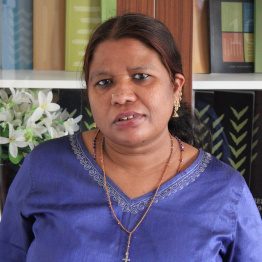As the Communist Party of China (CPC) celebrates the 100th year of its formation, many articles have appeared that assess the record of China in various socio-economic spheres. One such discussion is on poverty reduction. President Xi Jinping stated at the centenary ceremony on 1 July 2021 that “we have brought about a historic resolution to the problem of absolute poverty in China . . . ” Earlier, on 25 February 2021, Xi Jinping said that China had won a “complete victory” in the fight against poverty, a miracle that would “go down in history”.
Some scholars have questioned this claim. According to one article, “the official claim of zero poverty is untenable” because China uses a low poverty line. This note is intended to set the record straight on the poverty line and trends in poverty ratios in China.
The poverty line that is used globally is constructed by the World Bank. According to the World Bank’s schema, national poverty lines rise with the levels of national incomes. As such, the poverty lines used are different for four sets of countries.
- High income countries (HIC): $21.70 per capita per day
- Upper middle-income countries (UMIC): $5.50 per capita per day
- Lower middle-income countries (LMIC): $3.20 per capita per day
- Low-income countries (LIC): $1.90 per capita per day
The $1.90 per day poverty line is the “headline poverty threshold” at 2011 prices. This poverty line was also used in drafting the United Nations’ Sustainable Development Goal 1.1.
In 2011, before all this happened, the National Bureau of Statistics of China (NBS) had defined its national poverty line as RMB 2300 per person per year at 2010 prices. This new national poverty line of 2011 was almost double (92 per cent higher than) the national poverty line as defined in 2009, which was RMB 1196 per person per year. In PPP dollar terms, the new national poverty line was $0.93 per day. Nevertheless, when adjusted for prices differences across rural and urban areas, the rural poverty line was fixed at $2.30 per day, that is, at a level higher than the World Bank’s international poverty line of $1.90 per day.
In 2012, Xi Jinping took over as President. One of the important targets he set for the country as part of the 12th Five-Year Plan was to lift everybody in China above the “current poverty line”. In a speech delivered at the 19th Congress of the CPC, Xi Jinping reiterated the point: “we must ensure that by the year 2020, all rural residents living below the current poverty line have been lifted out of poverty, and poverty is eliminated in all poor counties and regions.” By current poverty line, what was implied was the international poverty line of $1.90 per day.
Two factors appear to have changed after 2012. First, the World Bank reclassified China from a lower middle-income country to an upper middle-income country. This meant that the poverty line applicable became $5.50 per day. Secondly, from October 2017, the World Bank began to release data on poverty for all countries based on two additional poverty lines at 2011 prices: $3.20 per day and $5.50 per day. This was done to allow for a diversity of judgements in understanding the levels of poverty across the world.

Source: World Bank
As the target of poverty eradication was already announced based on the poverty line of $1.90 per day in 2012, China did not revise upwards the target for poverty reduction. Officially, it stuck to the target of elimination of poverty based on the $1.90 per day poverty line by 2020. However, in the speeches delivered by Xi Jinping, one notices that the reference shifts over time from eradication of “poverty” to the eradication of “extreme poverty.” It is, thus, wrong to argue that China claims eradication of poverty based on an updated poverty line; Chinese leaders acknowledge the change of poverty line and accordingly claim only an eradication of extreme poverty in a “moderately prosperous society”.
In effect, the target set by China for 2020 was the eradication of extreme poverty based on a poverty line of $1.90 per day.
Data from the World Bank’s POVCAL database show that the extent of poverty reduction in China after 1980 was absolutely phenomenal. Figure 1 shows trends in the headcount ratio in China based on all three poverty lines: $1.90, $3.20, and $5.50 per day. By all three counts, the decline of poverty was from a near-universal poverty status in 1981. In 2019, the headcount ratio was 0.2 per cent based on the $1.90 poverty line; 2.1 per cent based on the $3.20 poverty line; and 14.1 per cent based on the $5.50 poverty line.
Given China’s backwardness in the post-War years and its large population, the record of poverty reduction is nothing short of extraordinary. Both rural and urban areas were covered (see Figures 2 and 3). Over the last four decades, 770 million rural residents were pulled above the poverty line in China, accounting for 70 per cent of global poverty reduction in the same period.

Source: World Bank.

Source: World Bank.
It is only when we consider the highest $5.50 poverty line that the remaining extent of poverty in China emerges as anything close to significant. The headcount ratio was 14.1 per cent in China as a whole, 25.8 per cent in rural areas and 6.4 per cent in urban areas. It is notable that such levels of rural poverty were based on a poverty line higher than the international poverty line of $1.90 per day (see Figure 4).

Figure 4 Rural poverty in China based on the national poverty line and international poverty line, 1990 to 2018, in per cent
How did China achieve this unprecedented goal of lifting 100 million persons above the poverty line in less than eight years? According to one assessment:
To meet these goals, the government scaled up efforts to track poverty. By 2014, authorities had identified 89.6 million poor people, 29.5 million poor families, and 128,000 impoverished villages. The annual government budget devoted to poverty alleviation also more than doubled from $7.5 billion (RMB 46.8 billion) in 2015 to $18.3 billion (RMB 126.1 billion) in 2019…
Chinese leaders also pledged to eliminate the “two worries” (inadequate food and inadequate clothing) and provide “three guarantees” (access to healthcare, education, and housing . . . These goals are unprecedented in their scope, as previous Chinese administrations generally committed only to alleviating poverty, not to completely eradicating it.
Data from the NBS show major achievements in non-income measures of well-being in rural China between 2012 and 2018 (see Figure 5).
There is no doubt that challenges remain. The next objective set by the CPC is to eradicate poverty based on the poverty line of $5.50 per day. There are also challenges of unequal and inadequate access of poverty alleviation and cash transfer programmes and vulnerabilities in income and employment. Those are challenges for the next decade. But none of that should let anyone be disdainful of the historic achievements of the CPC in the eradication of extreme poverty.

Figure 5 Selected indicators of well-being in rural China, 2012 to 2018
About the author
R Ramakumar is a Professor at the Tata Institute of Social Sciences, Mumbai.





























































 Sudha is an Administrative Assistant of the Foundation. She assists the administrative division of the Foundation and also has taken part in fieldwork organised by the Foundation.
Sudha is an Administrative Assistant of the Foundation. She assists the administrative division of the Foundation and also has taken part in fieldwork organised by the Foundation.











